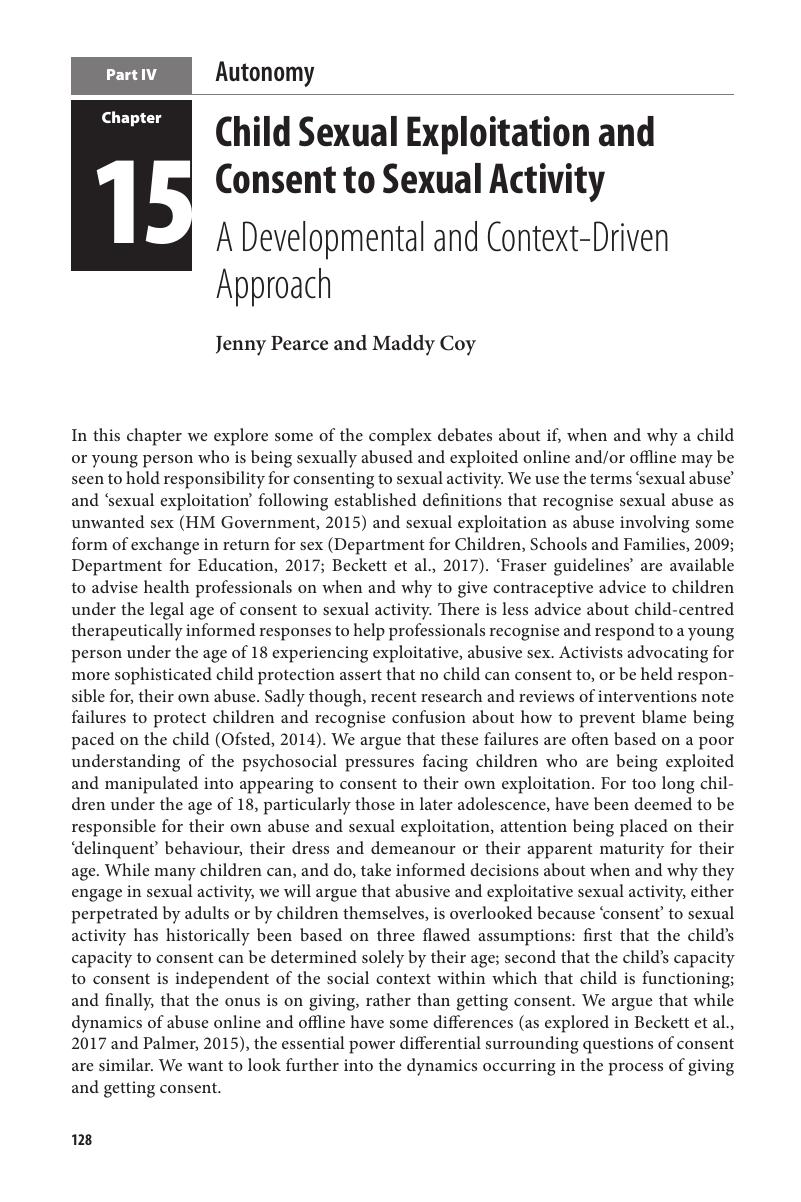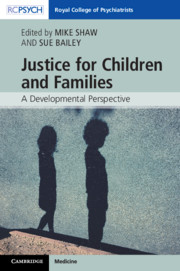Book contents
- Justice for Children and Families
- Justice for Children and Families
- Copyright page
- Contents
- Contributors
- Foreword
- Part I Overview
- Part II Fairness
- Part III Protection
- Part IV Autonomy
- Chapter 14 Towards a Theory for the Development of Autonomy
- Chapter 15 Child Sexual Exploitation and Consent to Sexual Activity
- Chapter 16 Treatment without Consent
- Chapter 17 Autonomy and Decision-Making in Children and Adolescents with Gender Dysphoria
- Chapter 18 Criminal Responsibility
- Part V Synthesis and Response
- Index
- References
Chapter 15 - Child Sexual Exploitation and Consent to Sexual Activity
A Developmental and Context-Driven Approach
from Part IV - Autonomy
Published online by Cambridge University Press: 13 August 2018
- Justice for Children and Families
- Justice for Children and Families
- Copyright page
- Contents
- Contributors
- Foreword
- Part I Overview
- Part II Fairness
- Part III Protection
- Part IV Autonomy
- Chapter 14 Towards a Theory for the Development of Autonomy
- Chapter 15 Child Sexual Exploitation and Consent to Sexual Activity
- Chapter 16 Treatment without Consent
- Chapter 17 Autonomy and Decision-Making in Children and Adolescents with Gender Dysphoria
- Chapter 18 Criminal Responsibility
- Part V Synthesis and Response
- Index
- References
Summary

- Type
- Chapter
- Information
- Justice for Children and FamiliesA Developmental Perspective, pp. 128 - 137Publisher: Cambridge University PressPrint publication year: 2018



